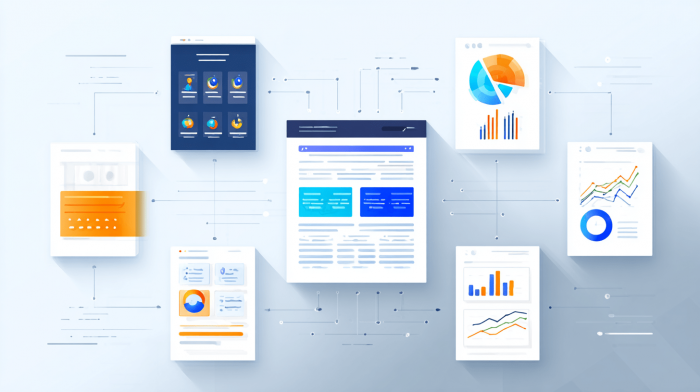The protection of personal data is a key element of modern online business that aims to strengthen customer trust. This is especially relevant for website owners who interact with residents of the European Union and are required to comply with the General Data Protection Regulation (GDPR). Non-compliance with this regulation poses the risk of financial penalties and threatens a company’s reputation, negatively affecting its market position. However, for many, the standards of this regulation remain unclear and require additional clarification. So let’s take a closer look at how to ensure your website is GDPR-compliant, who the regulation applies to, and which practical steps are necessary for implementation.

What is GDPR and who needs it
GDPR (General Data Protection Regulation) is a regulation adopted in May 2018 to strengthen the rights of EU residents regarding the use of their personal information. Its main goal is to ensure maximum transparency and clear rules for companies (websites) working with such data. The regulation defines requirements for the collection, processing, and storage of personal information, as well as principles of responsible handling of this data by businesses.
Compliance with this regulation is mandatory for all platforms that deal with customers from the EU. This includes online stores that accept orders via the internet, services with registration or subscription features, and any resources where visitors submit their contact or payment details. All of these must ensure clear user notification, proper storage of collected data, and adherence to the high privacy standards established by GDPR.
Legal and organizational aspects of GDPR compliance
When offering comprehensive internet marketing services, our team goes beyond technical solutions. We place considerable focus on organizational aspects that directly affect legal safety and user trust, emphasizing the following areas:
- Privacy policy preparation. A document that sets rules for data collection, processing, and storage, creating clear and understandable terms for interaction between the site owner and visitors while ensuring process control.
- Updating website terms of use. Enables alignment of the resource’s terms of use with current legislation and GDPR requirements, making them clear to users and specifying service access procedures.
- Reviewing personal data collection forms. Allows evaluation of how well collection processes meet security standards, with timely corrections to eliminate the risk of data leaks or misuse when necessary.
- Obtaining explicit user consent. Ensures that each visitor knowingly and voluntarily provides personal data, reinforcing transparency and building trust in the website.
- Organizing the consent withdrawal procedure. Allows users to revoke their data processing consent at any time, highlighting transparent interaction with the audience and respect for user rights.
- Implementing the right to data erasure. Provides the ability to completely delete personal data, enhancing transparency and demonstrating the business’s commitment to the highest standards in this field.

Technical solutions for GDPR-compliant websites
From a technical standpoint, ensuring GDPR compliance requires developing and implementing a range of measures that safeguard user data processing. The use of a secure HTTPS protocol helps protect data transmission, while certification and encryption enhance the overall security of stored information. Equally important is setting up regular backups to quickly restore data in the event of a failure or external interference, maintaining the site’s operational integrity.
As demonstrated by practice and examples from the QuatroIT web studio portfolio, these measures should not be static, since modern cyber threats constantly evolve. That is why applied solutions should be regularly audited and updated according to current standards. This approach helps prevent potential problems and strengthens client confidence in the website’s reliability. Ongoing attention to personal data protection also becomes an additional competitive advantage that significantly improves the company’s market position.
Practical tips for improving data protection
For anyone looking to website maintenance to avoid potential legal issues and fines, we offer a set of effective solutions with particular focus on the following aspects:
- Data leak prevention. Implement multi-level security measures to reduce the risk of unauthorized access to personal data, ensuring the site’s safe and stable operation.
- Cookie banner configuration. Set up banners that clearly inform users about the use of cookies, allowing them to manage their consent in accordance with legal requirements.
- Registration form configuration. Adjust and update forms to make the data collection process more convenient and secure while fully complying with privacy requirements.
- Data processing registry maintenance. Create and maintain a registry that clearly outlines all processes involving personal data, giving website owners a complete picture of how this data is used.
- Activity log implementation. Introduce systems that track all user actions on the website, enabling early detection of violations or threats and improving overall security.
- Access rights segmentation. Set restrictions on personal data access based on user roles and permissions, enhancing data security and platform protection.
Planning to grow your business and want to ensure your site complies with European security regulations? Then we invite you to collaborate. Our web studio provides turnkey website development with a comprehensive approach, including an audit of the existing resource, identification of potential issues, and their resolution. We always bring projects to a successful conclusion and guarantee results that truly align with the owner’s needs. Contact us – QuatroIT specialists are here to help!
Q&A on implementing GDPR for websites
What are the consequences of GDPR violations for Ukrainian companies?
In the event of a violation, businesses may face fines, the amount of which depends on the company’s size and the nature of the misconduct. For smaller companies, the penalties are usually moderate, but they can still significantly impact financial stability and how the target audience perceives the business.
Does Ukrainian business need a separate Data Protection Officer (DPO)?
When discussing which websites bring business leads, we always emphasize that small platforms can often operate without a DPO. However, companies handling large volumes of user data or sensitive information (health, finances, or private life) should consider appointing one to minimize potential risks.
What is the difference between user consent and a company’s legitimate interest?
User consent is a conscious and unambiguous confirmation for personal data processing. Legitimate interest, on the other hand, allows companies to use data without explicit consent if it does not conflict with user rights or interests. It is important to clearly distinguish these legal bases in the privacy policy and explain how each is applied.
Should GDPR be considered when using analytics tools (such as Google Analytics)?
If your site processes data from EU residents, GDPR applies to the use of analytics tools as well. To comply with the regulation, cookie banners must be implemented, user consent obtained, and IP addresses anonymized. These measures significantly reduce legal risks and help ensure proper security levels.
How can Ukrainian companies verify their website’s GDPR compliance?
The first step is an internal audit that reviews privacy policies, data collection and processing procedures, and current technical settings. If needed, external experts can be involved to identify hidden issues and offer solutions to avoid potential fines.
Is it necessary to adapt content for EU residents?
Companies working with European audiences should provide terms of use and privacy policies in multiple languages. This makes the site more understandable for visitors and ensures clear communication of data processing practices. As a result, user trust in the business increases, positively affecting brand reputation and competitiveness.











